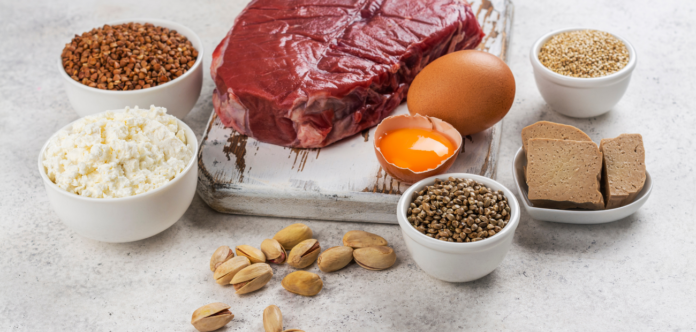Maintaining a healthy lifestyle in the area of nutrition requires finding a balance between indulgence and careful consumption. Purine, a naturally occurring substance included in a variety of foods, is one ingredient that is frequently the subject of investigation. Purine rich foods have gained importance in the past few years.
This article will address the idea of a reduced purine diet, discuss foods high in purines, and discuss the importance of purines in the body.
What is Purine?
Purines are organic substances that function as the building blocks of DNA and RNA and are essential to their structure. Although purines are necessary for the body to operate properly, eating too much food with high purine content can cause uric acid to build up.
High uric acid levels have been linked to gout, kidney stones, and other associated health problems.
Food With High Purine Content
There are some foods known for having a lot of purines in them. Some seafood like anchovies, sardines, and mussels and organ meats like liver, kidneys, and sweetbreads are all rich in purine.
Other high purine containing food are Red meat, game meats, and some fish, such as haddock and trout. People who like a well-rounded diet should limit the intake of these sources.
1. Organ meat: Liver, kidney and other organ meats have high purine content.
2. Seafood: Seafoods rich in purines include anchovies, sardines, mussels, scallops, herring, and trout.
3. Red meat: Purines can be found in red meats such as lamb, hog, and beef.
4. Game meats: venison, rabbit, and elk are all examples of game meat which are high in purines.
5. Some vegetables: Some vegetables like Asparagus, spinach, and mushrooms have large amounts of purine.
6. Beer and alcohol: Because beer contains purines, it is particularly linked to an increased chance of gout. Additionally, some research indicates that overall moderate to severe alcohol use may be linked to elevated uric acid levels.
Foods containing Purine:
Plant foods like Mushrooms, spinach, and asparagus are high in purines. The purines in these plants, however, are usually thought to have a lower potential to cause uric acid accumulation when compared to those obtained from animals.
Also Read: Itchy Ears: Causes, Symptoms & How to Get Relief
Low Purine Diet
Making deliberate decisions to limit the consumption of foods high in purines is the first step towards adopting a low purine diet. For those with gout or those who may have increased uric acid levels, this dietary strategy is frequently advised.
Some Of The Low Purine Food:
- Dairy Products: dairy products, such as cheese, yoghurt, and milk, have minimal purine content. These provide no serious risks when used into a low-purine diet.
- Eggs: One can include eggs into a low-purine diet as they are a low-purine protein source.
- Fruits: Purines are relatively low in most fruits. Citrus fruits, apples, berries, cherries, and grapes are a few examples.
- Grains: A low-purine diet can contain grains because they are often low in purines and include rice, pasta, bread, and cereals. In general, whole grains are a healthy option.
To adopt a low-purine diet, consider the following guidelines:
- Boost Hydration: excess uric acid from the body when you drink plenty of water which lowers the chance of crystallization.
- Limit High-Purine meals: Moderation is essential, but eliminating high-purine meals isn’t required.
- Select Low-Fat Dairy: Keep your calcium intake steady without raising your purine consumption by choosing low-fat or fat-free dairy products.
- Include Good Fats: Almonds, avocados, and olive oil are all foods high in healthy fats, they don’t cause purine accumulation.
Keep an eye on Your Alcohol Intake: Beer in particular might raise your uric acid levels. Reducing alcohol intake can be advantageous, especially when it comes to beer and spirits.
Are Purine Rich Foods Beneficial for Your Health?
Consumption of purine-rich food has to be moderated but Purine-rich food is a natural component of many diets and supports vital biological functions. ATP, DNA, and RNA help to provide energy and purine is essential for their synthesis.
On the other hand, excessive consumption may raise uric acid levels, which may result in diseases like gout. The risk of health problems can be raised because of purine-rich food. However, not all meals containing purines are harmful, some, including dairy, eggs, and plant-based proteins, are thought to be healthy.
Conclusion
Food high in purines has effects on the body but a low purine diet can help promote improved general health. For those individuals who may have a risk of disease such as gout sustaining a balanced purine consumption is essential for overall health.
By being aware of the kind and quantities of Purine-rich foods you eat you can avoid various health problems as Purine-rich foods are a natural component of many diets. By eating a range of low-purine foods, drinking enough water, and making wise decisions people may have a healthy, balanced diet with less chance of high uric acid and associated problems.
ALSO READ: PCOD: What is PCOD Problem, Its Causes & Symptoms





